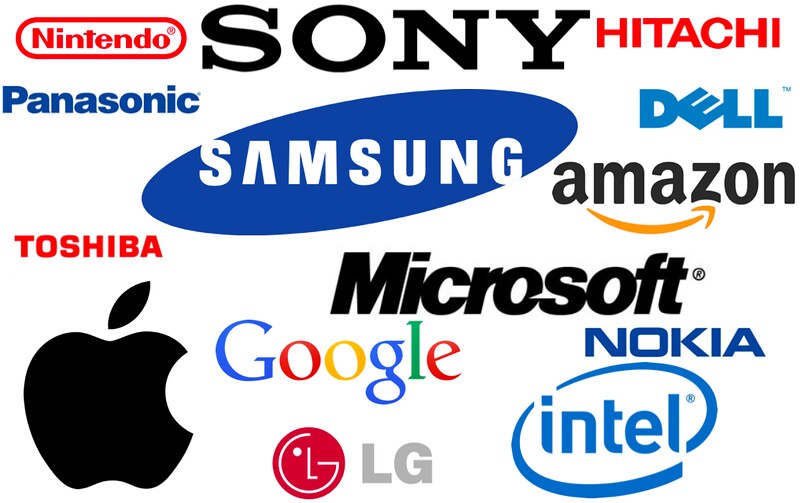
“Largest Consumer Electronics Companies” by daniel_iversen is licensed under CC BY 2.0.
Understanding Grey Goods: What They Are, and Their Pros and Cons
By Stefan
Date: August 23, 2024
In today’s global marketplace, consumers have more options than ever when it comes to purchasing products. However, not all goods that reach store shelves or online platforms follow the same channels of distribution. One category that often sparks debate among consumers, retailers, and manufacturers is “grey goods.” While these products can offer attractive prices and access to otherwise unavailable items, they also come with risks and ethical considerations. This report delves into what grey goods are, their pros and cons, and the implications for consumers and businesses alike.
What Are Grey Goods?
Grey goods, also known as parallel imports, are products that are legally imported and sold outside of the manufacturer’s authorized distribution channels. These goods are typically genuine products intended for sale in a different country or region but are brought into another market without the manufacturer’s permission. Grey goods differ from counterfeit or black-market products in that they are authentic; however, they may not come with the same warranties, customer support, or after-sales service that would be available if purchased through official channels.
Common examples of grey goods include electronics, luxury goods, cosmetics, pharmaceuticals, and even automobiles. These products are often sold at lower prices than their officially distributed counterparts, making them appealing to cost-conscious consumers.
How Grey Goods Enter the Market
Grey goods enter a market through a process known as parallel importing. This occurs when a retailer or individual purchases products in a country where they are sold at a lower price, often due to differences in local pricing strategies, taxes, or currency exchange rates. The products are then imported into a country where the same items are sold at higher prices. These goods are offered to consumers at a discount, undercutting the prices set by authorized distributors and retailers.
While parallel importing is generally legal, it operates in a gray area of the law. The legality of grey goods varies depending on the country and the specific product category. Some nations have strict regulations to protect local distributors and manufacturers, while others have more lenient policies that allow parallel imports to compete freely in the market.
Pros of Grey Goods
1. Lower Prices
One of the most significant advantages of grey goods is their lower cost. Because these products are often sourced from markets where they are cheaper, retailers can offer them at a reduced price compared to those purchased through authorized channels. For budget-conscious consumers, this can make high-end or otherwise expensive products more accessible.
2. Access to Unavailable Products
Grey goods can provide consumers with access to products that may not be officially available in their country or region. This is particularly common with electronics, fashion items, and cosmetics that are launched in specific markets before being released globally—or that may never be released in certain regions at all.
3. Increased Competition
The availability of grey goods can increase competition in the marketplace, potentially driving down prices for consumers. Official distributors may be forced to lower their prices to compete with grey market retailers, leading to better deals for buyers.
4. Diversity of Choice
With grey goods, consumers can find a wider variety of products, including different models, colors, or editions that might not be offered by local retailers. This variety allows for a more personalized shopping experience, where consumers can choose products that better meet their specific needs or preferences.
Cons of Grey Goods
1. Lack of Warranty and Customer Support
One of the most significant downsides of purchasing grey goods is the potential lack of warranty and customer support. Because these products are not sold through official channels, manufacturers may refuse to honor warranties or provide after-sales service. This can leave consumers vulnerable if the product is defective or requires repair.
2. Potential Quality Issues
While grey goods are generally authentic, there is still a risk of receiving products that do not meet the same quality standards as those sold through authorized channels. For example, electronics intended for a different market might not be compatible with local power standards, or the packaging and instructions might be in a foreign language, leading to confusion or misuse.
3. Ethical Considerations
The sale of grey goods raises ethical questions about fair trade practices and the rights of manufacturers and authorized distributors. By bypassing official distribution channels, grey goods can undermine the investments that companies make in branding, customer service, and product development. This can lead to strained relationships between manufacturers and retailers and may impact the overall market structure.
4. Legal Risks
Although grey goods are generally legal, there are instances where they can fall into a legal gray area. Importing and selling grey goods can sometimes violate trademark laws, intellectual property rights, or local regulations, leading to potential legal repercussions for both the sellers and buyers.
5. Uncertainty Over Product Origin
Consumers purchasing grey goods may face uncertainty regarding the origin of the product. There is a risk that the product could be outdated, intended for a different market with different standards, or even improperly stored during transit. This uncertainty can lead to issues such as reduced product lifespan or incompatibility with local accessories and services.
The Impact on Businesses and Manufacturers
The proliferation of grey goods presents significant challenges for businesses and manufacturers. Authorized distributors and retailers often struggle to compete with the lower prices of grey market products, which can erode their market share and profit margins. This competition can lead to tensions between manufacturers and their official partners, as the presence of grey goods undercuts the value of exclusivity that authorized channels provide.
For manufacturers, grey goods can complicate supply chain management and brand reputation. When consumers purchase grey goods and encounter problems—such as lack of warranty or customer support—this can reflect poorly on the brand, even if the issues stem from the product being purchased outside of official channels.
The Consumer’s Dilemma: To Buy or Not to Buy Grey Goods?
For consumers, the decision to purchase grey goods involves weighing the potential benefits against the risks. While the allure of lower prices and access to otherwise unavailable products is strong, buyers must consider the potential downsides, such as lack of warranty, potential quality issues, and the ethical implications of supporting grey markets.
To make an informed decision, consumers should:
- Research the Product: Before purchasing grey goods, consumers should thoroughly research the product to understand any differences between the grey market version and the one sold through authorized channels. This includes checking for warranty information, compatibility with local standards, and potential legal issues.
- Evaluate the Seller: It is crucial to purchase grey goods from reputable sellers who have positive reviews and a track record of providing quality products. Consumers should be wary of deals that seem too good to be true, as these may involve counterfeit or substandard items.
- Consider the Long-Term Costs: While grey goods may offer short-term savings, the lack of warranty and customer support could result in higher long-term costs if the product requires repair or replacement.
Conclusion
Grey goods occupy a complex space in the global market, offering both opportunities and risks to consumers and businesses alike. While they provide an avenue for lower prices and access to exclusive products, they also come with potential drawbacks, including lack of warranty, ethical concerns, and legal risks. As the market for grey goods continues to evolve, it is essential for consumers to stay informed and make decisions that balance cost savings with the assurance of quality and support. For businesses and manufacturers, addressing the challenges posed by grey goods requires a strategic approach that considers both consumer demand and the need to protect brand integrity.


